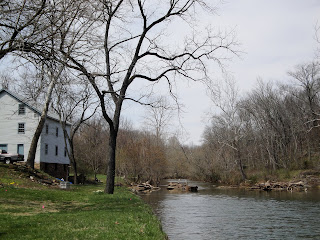I'm back! The past three months have been a whirlwind - moving (back) to Williamsburg, starting graduate school, and wedding planning - and somewhere along the way blogging got left in the dust. Yet my mind has been brimming with thoughts and ideas, so here we go --
Recently, I've spent a lot of time thinking about my academic specialty and career in general. While I have always loved being in school, life as a graduate student has certainly made me question my desire to get a PhD and pursue an academic career. I suppose it's easy to idealize working or being in school from the other side of the fence - I certainly did when I was working full time. This semester has been full of frustrations - fear of failure (or fear of just adequacy), a struggle to fit into an academic environment as a grad student, and efforts to maintain balance between "work" and "home". All the same, I've at least reached an understanding of some academic interests (those pidgenholed "research interests" on a CV...) and tentitve ideas for my thesis.
 |
| Archaeological discovery of a human burial |
As some of my readers will remember, I spent much of my "year off" working in
repatriation, the return of human remains and objects to claimant Native American Tribes. When I returned to William and Mary for graduate school this fall, I decided to take a class in human skeletal biology. The inordinate amount of excitement I had for this class - which consisted of learning to identify and analyze in basic ways the bones of the human body - started the turning of the gears...
In contemporary archaeology, you generally don't want to find burials. Human bones mean paperwork, politics, and controversy, especially if they turn out to be the remains of Native Americans. But I've realized over the past few months that sometimes the best way to mitigate controversies is to understand them, to be well versed in mortuary practices and skeletal biology so that when issues arise - whether in museum repatriation, construction projects, or academic archaeology - you are prepared to reach a compromise between the prerogatives of different communities.
 |
| From Written in Bone |
Let's face it: we (Americans) don't like to talk about death. It's the unknown, the uncertain (and in the case of zombies, the seriously frightening). In some cultures, talking about death is
taboo. Yet for others - the Hispanic celebration of the Day of the Dead, for example - family members revisit the graves of the dead as a way of remembering their lives. As Americans, we see great importance in honoring those who have gone before us, especially those who died tragically or in military conflicts, as revealed in recent controversies about
Arlington Cemetery, the
Air Force (and
this), and the placement of the remains of
9-11 victims in a public memorial museum. But it's important to remember that culturally, we understand death, burial, and memory in very different ways - hence the reason why the remains of
early Euro-American settlers can be displayed in a museum while it would be unacceptable (today) to display Native American remains in a similar way.
I see the study of the dead as an important way to honor those who have come before us, by remembering their lives. Just think about it.
 |
| Remembering those who died on 9-11 |




































